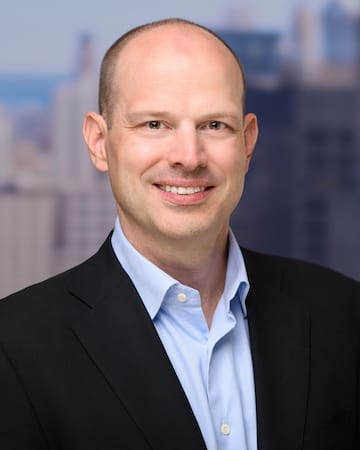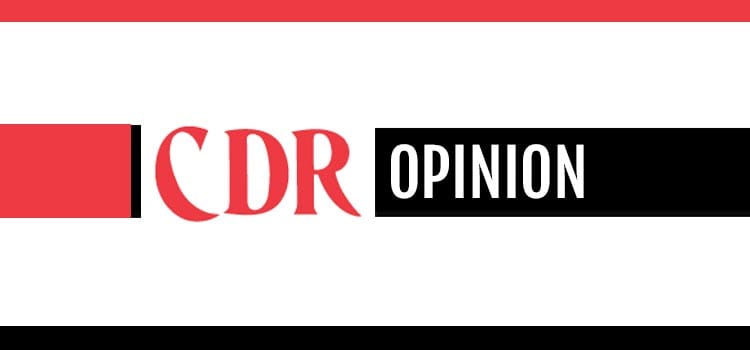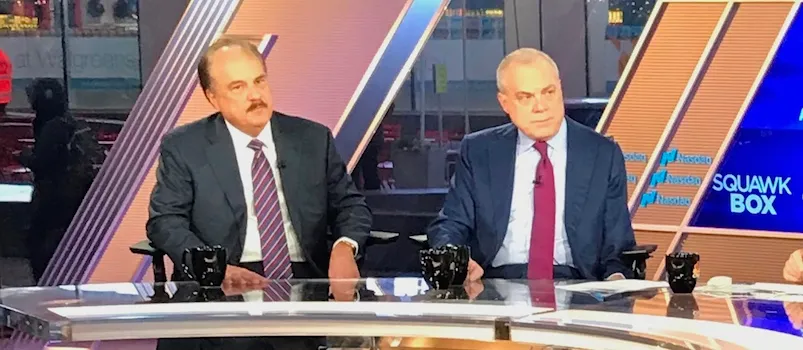The impact of a healthy population and vibrant workforce on the ability of the economy to sustain growth should not be underestimated.
While Congress has been mired in a political debate around the near-term costs and burden of the Affordable Care Act, lost from this deeply partisan discussion is a tangible, forward-thinking consideration of the key trends that are driving innovation and reshaping the health care landscape in the future. Lost, too, is any longer-term focus on the material benefits of ensuring affordable, high-quality, consistent access to health care for all — not because of some greater social responsibility but because it is a necessity to catalyze and fuel the growth of our economy.

Per Hong, A.T. Kearney
Certainly, the core challenges to the health of our nation continue to loom large. We are an aging society. With about 10,000 baby boomers turning 65 each day, our rapidly aging boomer population is bringing a sharp increase in the incidence of chronic, age-related diseases and taxing the health care system.
Nearly 2 million new cases of cancer are projected to occur annually by 2020, and as many as 6.8 million people over age 65 will suffer from Alzheimer’s disease by 2025, up over nearly 25% from today. In addition, we are in the midst of one of greatest public health crises in recent memory. In 2016, 60,000 Americans died from an opioid-related drug overdose, a rate nearly 50% higher than the number of Americans who died at the peak of the AIDS epidemic in 1995.
Last year, the economic burden to the system of the prescription opioid epidemic reached an estimated $78.5 billion, and it shows no signs of abating.
Exacerbated by greater income stratification and inequality, costs of health care in America are spiraling. In the past decade, working Americans have seen the average deductible in employee-sponsored health plans rise by 255%, and already one of every 10 Americans does not take medications as prescribed because the costs are too high. If left unaddressed, health-related costs and expenditures are forecast to reach a staggering yearly expenditure of more than $5.5 trillion.
In the face of these challenges, however, we observe multiple forces that are already shaping the future of health care in the United States and that potentially can radically shift the trajectory of health care costs, provision and access over the next 10 years as America approaches the 250th anniversary of its founding (Health@250).
Four drivers of future change in particular — Millennial generation preferences, accelerated shifts to the “consumerization” of health care, technological disruption, and scientific advancements enabling our ability to personalize and target treatments in early stages — offer inspiring possibilities for how the health of the U.S. society, and by inference the economy, will emerge from this critical juncture.
Rise of the Millennials: Less wealthy, more healthy
Millennials, ages 19 to 35 in 2016, have the power to shape our society in ways both subtle and obvious, and the question is: Where they will take us next?
With nearly 75 million Millennials in the United States, this generation represents the largest group of American consumers and the nation’s largest workforce cohort — with a profound opportunity to realign the nation’s priorities as they enter their prime years and influence the shape of the future health care landscape. In contrast to prior generations, they are healthier on the whole. They smoke less, are more diet conscious and exercise more than prior generations.

The percentage of Millennials reporting they were obese fell 0.6% from 2008 to 2015, and the percentage reporting they were diabetic fell 0.5% — far exceeding trends in other generational cohorts. Moreover, Millennials are driving health-sector technology adoption and innovation that are rapidly reshaping how companies think about providing access to service and shifting opportunities.
While Millennials are healthier, wealth remains concentrated with baby boomers, who by some estimates control as much as 70% of discretionary spending. Saddled with unprecedented student-loan debt as they negotiate a labor environment marked by continued low earnings and stagnant wage growth, Millennials are more likely than any other generation to forgo care due to their particularly precarious financial circumstances.
A Pew Research Center survey taken in January found that an overwhelming number of Millennials (more than 70%) say it’s the responsibility of the federal government to make sure all Americans have health coverage. Whether aging Millennials will continue to exhibit these beliefs and preferences is an open question, but one with profound implications for health care and the economy as a whole in Health@250.
Technological innovation impacts health
Advances in machine learning and artificial intelligence (AI) already are being used to address the most complex challenges in health care. With continued advancement of these innovations, 90% of U.S. hospitals are expected to implement AI by 2025. They also are expected to see greater efficiency and cost reductions as health care becomes more digitized.
With more devices and machines becoming connected through the Internet of Things (IoT), health care providers increasingly will diagnose and monitor patients from remote locations. Telemedicine has grown rapidly from just 7% adoption in 2010 to 22% in 2016, with more than 15 million Americans receiving remote medical care in 2016.
In addition, innovation in the sector is shifting rapidly to be driven cross-sector, as companies like Apple, Alphabet and Microsoft are rapidly entering this space because they recognize the data and technology opportunities that health care represents. The technology is not without risks, however.
Electronic health records also pose challenges, as a number of competing software programs are available that are not interoperable. Furthermore, there have been instances of hospital records being hacked and held for ransom. Data breaches in health care totaled more than 112 million records in 2015, affecting one in three Americans.
In the future, “outside” companies will pose the greatest competition to traditional health care companies, disrupting their business practices and future potential. As we explore the future of health in 10 years, how can patient data privacy and security be balanced with open architectures necessary to allow innovation? How quickly will automation and robotics be adopted in the sector, and what impacts will these technologies have on employment, cost and quality of care? How quickly will key new technologies be fielded and integrated into health care?
Health care consumerization
Partially driven by technology, health care is rapidly shifting away from the traditional doctor-centric treatment model to an open, consumer driven orientation for diagnosis and provision of services.
With the increasing availability of online medical information and growing capabilities of wearables, more Americans are self-diagnosing and treating their illnesses — without seeing a doctor.
Roughly 50% of Millennials and Gen Xers used online reviews when looking for their last health care provider and report that they would choose a doctor who used wearable data to manage a patient’s health outcomes over one who does not. Sixty-four percent of Millennials report they would be open to telemedicine as an alternative to nonurgent office visits. Seventy percent of Millennials report they would choose a doctor who offers a patient app over one who does not. Eighty-three percent of Millennials report they would want their doctor to have access to health data from their wearables.
Can rising consumer expectations about health care be met? How quickly can traditional health care models adapt to these changing consumer requirements? Do virtual sources of health information pose health risks (inaccurate self-diagnosis, hypochondria)?
Science advances accelerate
Scientific advancement is playing an ever-more-important role in health care. New genetic engineering technologies enable innovative gene therapies and open research frontiers, accelerating progress beyond expectations. Rapid advancements are being made in the study of the brain. Other scientific advancements are taking place in liquid biopsy, promising increased cancer diagnosis and treatment; and the study of the human digestive system and microbiome, promising to treat chronic disease, including obesity.
The opportunity is accelerating due to the exponentially falling cost of sequencing the human genome: By late 2016, the cost to draft an entire genome sequence had fallen below $1,000, compared to $14 million in 2006 and $150 million in 2003.
With a deeper genetic understanding and capability, new treatments and services are tailored to meet both consumer expectations and biology, holding the potential to deliver specific treatments to people based on their genetic makeup. Genome editing provides the prospect of fixing harmful mutations at a molecular level rather than with drug treatment.
Last year 132 personalized medicines were available, compared to only five in 2008, and 27% of all new molecular entities approved by the Food and Drug Administration were classified as “personalized.” Over the last five years, there has been a 75% increase in investment in personalized medicine, and today an estimated 42% of all drugs in development are personalized medicine.
The advantages of personalized health care from both a care and cost perspective are significant. For example, if patients with metastatic colorectal cancer received genetic testing before starting treatment, the United States would realize an annual health care cost savings of $604 million. Likewise, genetic testing prior to treatment of women with breast cancer would reduce chemotherapy use by 34%. Such advances, unfortunately, bring complex risks to the health care sector.
As the acceptance of CRISPR-Cas9 gene editing enzymes continues to expand and the cost has fallen, what ethical and regulatory standards should be enacted to cope with revolutionary change, particularly in human genetic engineering? Will breakthroughs change the cost calculus, and can they be shared equitably with all Americas? Can personalization of health care lead to greater patient responsibility for prevention, treatment and well-being? Can the benefits for personalized medicine be shared broadly and affordable?
Of course, with all the immense possibility these advances represent, no one knows what the future holds, and many things remain unclear. The future trajectory of each of these four health drivers is profoundly uncertain. Each is characterized by both inspiring possibilities and sobering truths, and how these various forces will evolve and interact over the next 10 years remains an open set of questions.
One of the key uncertainties that influence how these factors develop includes future levels of political and social cohesion or discord and whether there is consensus versus conflict around national priorities to improve health outcomes to fuel economic growth.
Add this all up and the conclusion is clear. If we are able to rise above the partisan myopia hampering our vision, our political and business leaders have the opportunity to make decisions and influence investment and innovation policies that can make the changes needed to bring about the best vision for the future health of our society and economy. Programs to direct resources and incentivize investments can drive rapid advances in diagnostic and treatment capabilities and lower cost to harness the incredible possibilities health care technologies offer to improve access, cost and quality for all.
With focused public and private investment support, particularly in the field of personalized medicine, we can create more efficient, customized treatments for patients, remove guesswork, reduce medical expenses overall and improve outcomes. By contrast, in an environment of political in-fighting, the country potentially risks deepening the already uneven, stratified coverage.
Steady advances in expensive health care technology and the proliferation of “concierge” medicine will allow the country’s wealthy citizens to live and work longer, but for much of the rest of the population, access and quality of care are highly stratified, and costs will continue to rise rapidly.
The United States is undergoing a massive social, economic and political health crisis, and we have arrived at a make-it-or-break-it crossroads in the history of health in America. The challenge in front of us is how to best harmonize health and economic policies to improve health outcomes and bring about the vision we pursue.
With scenario-based, forward thinking around the long-term impacts, we might provide a platform for business and political leaders to come together to assess the risks and take action in a complex, volatile market. If we do not succeed in accomplishing this, and an undesirable vision takes place, both our society and our economy will be failing as we celebrate the nation’s 250th anniversary. If we succeed, however, the possibilities for the future are boundless.
Per Hong is a partner in A.T. Kearney’s Health Care practice in Chicago. Contact him at per.hong@atkearney.com.







